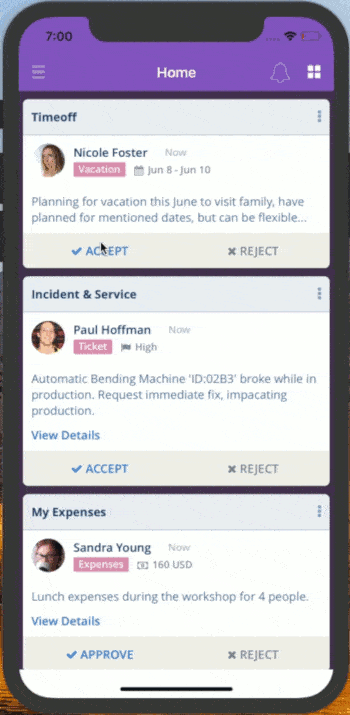Deploy a Universal Employee Engagement App for IT Assets

Employee disengagement has a higher cost than you think. Learn how can you improve employee engagement with a micro-application architecture.
On any given day, my team interacts with a number of apps across on-premises legacy systems, homegrown and cloud apps. The list includes apps such as:
- ITSM (i.e. ServiceNow)
- CRM (i.e. Salesforce)
- HCM (i.e. WorkDay)
- MyProgress intranet portal
- Corporate Travel Portal
- Marketing Automation (i.e. Eloqua)
- Web Analytics
- Invoice Approval (i.e. Oracle Cloud)
- Collaboration Tools (i.e. Microsoft Teams, Slack, Jira, Wrike, etc).
And this represents a subset of the systems Progress manages for my 1,500+ colleagues to run a $1B software company.
The proliferation of business apps and sites is very common across the industry and we hear it from other enterprises and our customers. IT leaders are starting to look at consolidating business applications overall and simplifying how different segments of employees engage with the assets they need. Streamlining IT assets not only reduces security risks and maintenance costs, but for employees, it translates to productivity by limiting context switching and ensuring critical notifications don’t get lost across a variety of chatty apps portals, mobile or email.
This article by Larry Dignan of ZDNet from a survey commissioned by RingCentral provides several really interesting statistics that capture some of these employee experiences:
- 68 percent of workers toggle between apps up to 10 times an hour
- 31 percent of workers who toggle between apps say they lose their train of thought
- Navigating apps is more annoying than doing chores for 53 percent of workers, paying bills for 52 percent and dieting for 50 percent
Another interesting statistic from Slack’s Future of Work Survey cites that 70% of workers say the availability of Slack, a modern communication tool, would be a factor when evaluating a job offer, ranking this even higher than a fitness stipend (62%), catered lunches (59%) and weekly happy hours (57%). That is hard to believe, but I’ve seen a multitude of preferences across Progress where different business lines and acquisitions bring in a different digital workplace culture. This is largely driven by the 18-44 year old crowd, which is the cutoff for engagement preferences between collaboration tools vs email according to the ZDNet survey above.
How Did We Get Here?
From working with IT and HR leaders in established enterprises, we’re seeing an ever-increasing number of apps and sites that have been deployed over the years, or even decades. Some of them don’t work on mobile devices, while others only seem to work on legacy browsers using the VPN during a new moon.
The technological and cultural landscape is always evolving for enterprises. As an example, my employer welcomed new employees and systems after acquiring two companies last year in Kinvey and DataRPM, and recently announced the acquisition of Ipswitch. Security risks further complicate matters, especially from GDPR for EU-based employees, as well as select US states, where steep fines are being introduced for non-compliance.
IT teams face difficult challenges to deliver solutions for employees that support a range of business objectives, while balancing security, compliance and cost.
Where Do We Go?
The consumerization of IT is creating an increase in user expectations for mobile engagement and user experience (UX). From the statistics above, employee disengagement costs are staggering, and preferences vary by demographics.
From a digital perspective, micro applications (or microapps) is the emerging architecture for better implementation of employee engagement apps within existing IT landscapes. This approach deconstructs sprawling apps and sites into reusable micro versions of apps. Each “micro” app presents only the single purpose functionality required in the context of how and when employees use it, and these can be portable and deployed across channels such as mobile, web or even chat.
The end result is a universal and consumer-grade employee engagement experience that is easier to enhance and maintain for evolving IT landscapes, with full IT governance.
Progress has developed an enterprise-grade serverless platform to develop and deploy microapps in containers for popular applications, including those I mentioned above like WorkDay, ServiceNow and more. The platform includes no-code integrations to existing enterprise applications and authentication providers.


